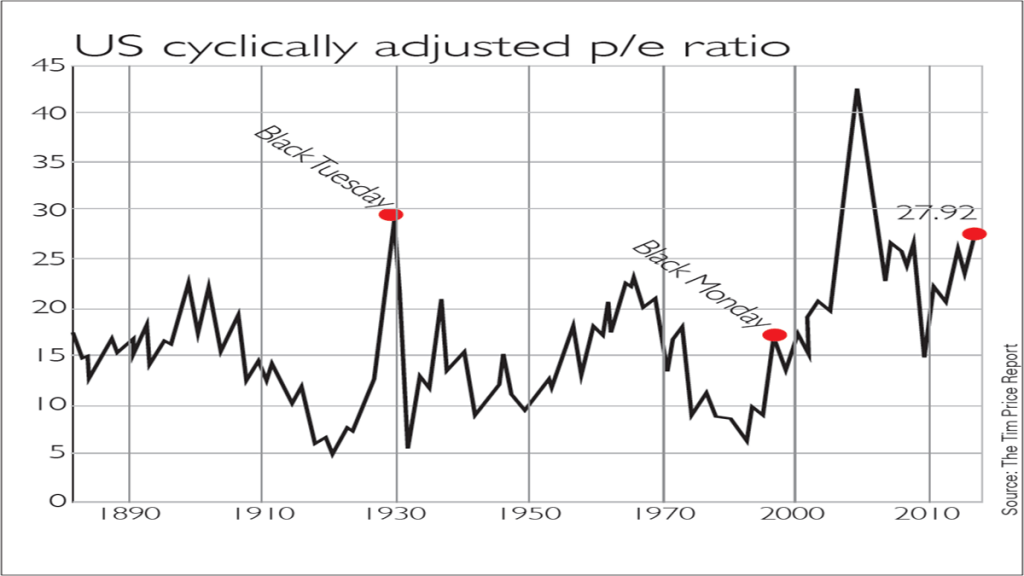
In the past few years, the US stockmarket has gone from expensive to extremely expensive. The cyclically adjusted price/earnings ratio (Cape) divides the price of an index by the average annual earnings figure over the past ten years, adjusted for inflation. It was developed by Yale economist Robert Shiller, so is often known as the Shiller p/e.
Cape evens out the sharp ups and downs of the profit cycle, which can give a skewed impression of the usual, one-year p/e ratio. The US Cape for the S&P 500 index has reached 28, close to the 1929 peak, which in turn was only exceeded by the apex of the dotcom bubble. The long-term average, as MoneyWeek contributor Tim Price notes in The Price Report, is 16.7, so the US market is 70% overvalued.
This doesn’t mean stocks will fall immediately. As the chart shows, valuations can stay elevated for years at a time – certainly longer than most short sellers can stay solvent. But over the very long term, valuations tend to revert to the mean. So buying stocks when Cape is high implies below-average long-term returns. This is another reason we are keener on European stocks. Capes in continental Europe tend to be in the teens.